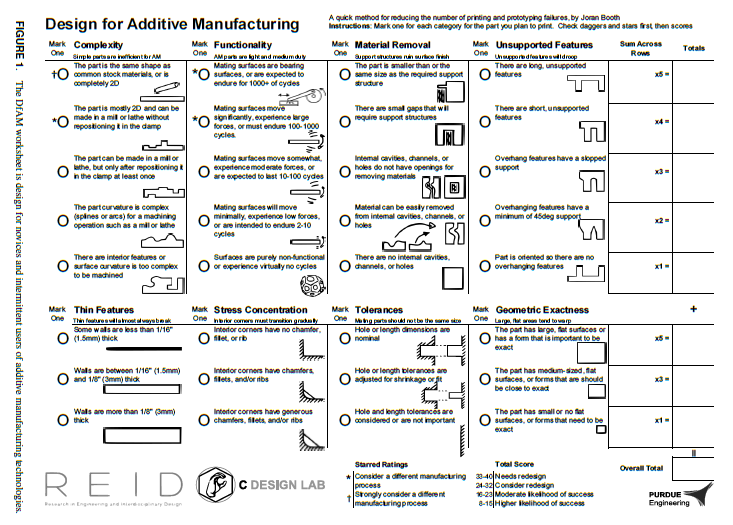ASME’s Journal of Mechanical Design has given its 2017 Editors’ Choice Award to The Design for Additive Manufacturing Worksheet by Joran Booth, Jeffrey Alperovich, Pratik Chawla, Jiayan Ma, Tahira Reid, and Karthik Ramani. Four criteria were used in selection: (1) fundamental value of the contribution, (2) expectation of archival value (e.g., expected number of citations), (3) practical relevance to mechanical design, and (4) quality of presentation. They received this award at ASME’s International Design Engineering Technical Conference in Quebec City in August 2018.
Abstract
Additive manufacturing (AM) technologies have become integral to modern prototyping and manufacturing. Therefore, guidelines for using AM are necessary to help users new to the technology. Many others have proposed useful guidelines, but these are rarely written in a way that is accessible to novice users. Most guidelines 1) assume the user has extensive prior knowledge of the process, 2) apply to only a few AM technologies or a very specific application, or 3) describe benefits of the technology that novices already know. In this paper, we present a 1-page, visual design-for-additive-manufacturing worksheet for novice and intermittent users which addresses common mistakes as identified by various expert machinists and additive manufacturing facilities who have worked extensively with novices. The worksheet helps designers assess the potential quality of a part made using most AM processes and indirectly suggests ways to redesign it. The immediate benefit of the worksheet is to filter out bad designs before they are printed, thus saving time on manufacturing and redesign. We implemented this as a go-no-go test for a high-volume AM facility where users are predominantly novices, and we observed an 81% decrease in the rate of poorly designed parts. We also tested the worksheet in a classroom but found no difference between the control and the experimental groups. This result highlights the importance of motivation since the cost of using AM in this context was dramatically lower than real-world costs. This second result highlights the limitations of the worksheet.

